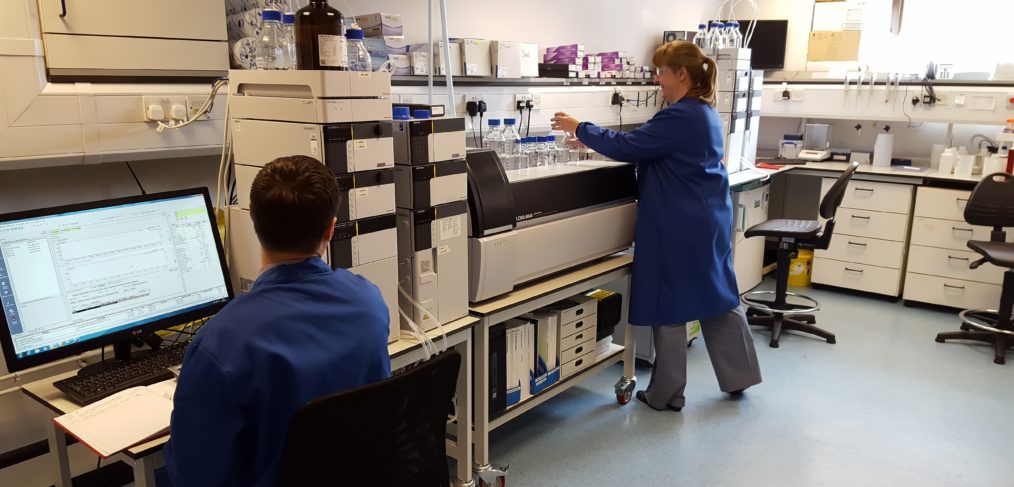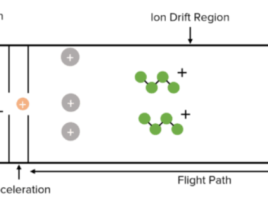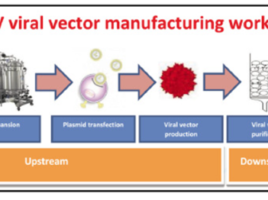
Analysis of Lactulose, Rhamnose and Mannitol in Human Plasma
Lactulose
Lactulose is a non-absorbable synthetic disaccharide made up of galactose and fructose that is also known as 1,4 beta galactoside-fructose (1). Because the human small intestinal mucosa lacks the enzymes needed to divide lactulose, it reaches the large intestine intact (1). Colonic bacteria convert lactulose to monosaccharides, which are then converted to volatile fatty acids, hydrogen, and methane. Lactulose inhibits the generation and absorption of ammonia in the intestine (1).
First, sugar metabolism in the colon produces a laxative effect by increasing intraluminal gas production and osmolality, resulting in a decrease in transit time and intraluminal pH (1). Constipation can benefit from its laxative effect.
Following that, lactulose stimulates enhanced ammonia uptake by colonic bacteria, which use the trapped ammonia as a source of nitrogen for protein synthesis (1).The process of converting ammonia (NH3) produced by gut bacteria to ammonium (NH4+), is aided by lowering intestinal pH (1).
Finally, lactulose reduces the synthesis of ammonia in the intestine (1). The bacteria that produce ammonia are destroyed by the acidic pH (1). Intestinal glutaminase activity is inhibited by the unabsorbed disaccharide, which prevents glutamine uptake and metabolism to ammonia (1).
Rhamnose
Rhamnose is a deoxy sugar that occurs naturally. It can either be classed as a methyl-pentose or a 6-deoxy-hexose (2). Buckthorn (Rhamnus), poison sumac, and plants in the genus Uncaria are all good sources of rhamnose. Microalgae belonging to the Bacillariophyceae class also produce rhamnose (diatoms) (2).
Mannitol
Mannitol is an osmotic diuretic that is physiologically inactive in humans and is present as a sugar or sugar alcohol in fruits and vegetables (3). Mannitol increases the osmolality of blood plasma, which allows more water to migrate from tissues such as the brain and cerebrospinal fluid into interstitial fluid and plasma (3).
Mannitol can be used to reduce intra-cranial pressure, intraocular pressure, promote diuresis in acute renal failure, excrete toxic materials and prevent intradialytic hypotension.
We’ve written a blog post before about mannitol. If you wish to read more about it click here.
The Three Sugars Together
Using the three sugars together is a test for Gut Malabsorption. The ratio of either disaccharide with the monosaccharide is used to determine where the problem is.
Our work
We offer analysis of lactulose, rhamnose and mannitol in human plasma. Contact us here to send your samples.
References
- Mukherjee S, John S. Lactulose. [Updated 2021 Jul 19]. In: StatPearls [Internet]. Treasure Island (FL): StatPearls Publishing; 2022 Jan. Available from: https://www.ncbi.nlm.nih.gov/books/NBK536930/
- Janet A Vogt, Paul B Pencharz, Thomas MS Wolever, L-Rhamnose increases serum propionate in humans, The American Journal of Clinical Nutrition. 2004 Jul; 80(1):89-94
- Gomes L. Analysis of Mannitol in Human Plasma. (Internet) (Cited on 2022 Jan 24) Available from: https://b-ac.co.uk/analysis-of-mannitol-in-human-plasma/


